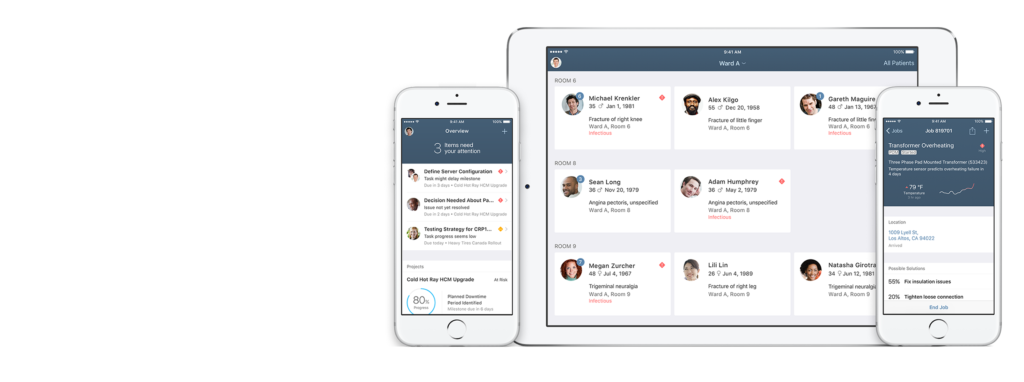One nice part of attending SAPPHIRE is you have a direct line to every product manager of SAP. I thought being down here in Orlando that I should get the scoop on this announcement and visited the folks in charge.
This announcement from Apple and SAP that they are officially partnering and building a native SDK for iOS and SAP definitely intrigued me. But the announcements are a bit vague. What is actually being done? Is it apps, is it a platform, is it SDK’s, and what does the Fiori Design Guidelines have to do with it? Finally, when can I get this!?
Here’s what I figured out:
- Firstly, there are a series of apps being developed by SAP and Apple collaboratively: Asset Maintenance, Professional Services apps for Consultants and Managers, and a healthcare application (PDHM) are showcased and appear to be real (though clearly not production ready).

SAP Apple iOS Apps - Secondly, there will be a Swift based SDK “sometime later this year”. So not a lot of immediate activities for us in the digital innovation space.
- Thirdly, some apps will be free, and others will be licensed. (Hopefully this isn’t Fiori licensing debacle all over again).
- Finally, the apps will be based on Fiori design guidelines. This is already published. They will look like this:

- The apps will all run through the Hana Cloud Platform (FYI – you can do this already today with HCP, Odata, OAUTH, and iOS, but they will provide consistency, templates, and other accelerators).

SAP iOS Architecture
Here are a few more screen shots…
Asset Management


Fingerprint scan to login

Manager app for professional services

Consultant App for professional services

PDHM

In conclusion, this is definitely an exciting development. Rest assured, at Mindset, we’ll be ready and anxious to develop with this digital innovation. Additionally, as an aside you can already develop iOS native mobile apps in this architecture today, so no need to wait. However, hoping this SDK and application accelerators provides some consistency, some nice content, and an ultimately better experience for people in the enterprise.
If you are interested in viewing similar articles, visit our blog, here.
View our LinkedIn, here.